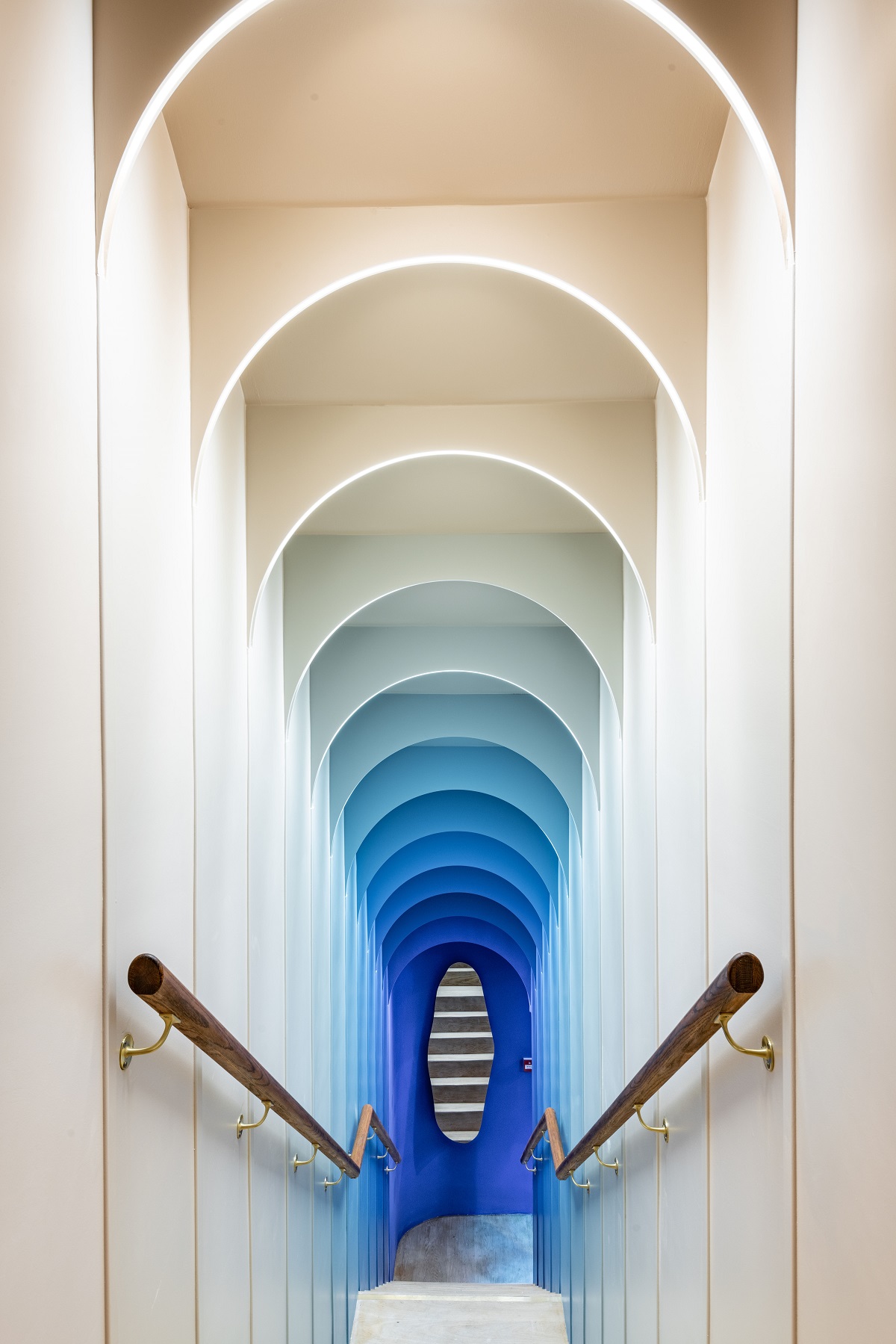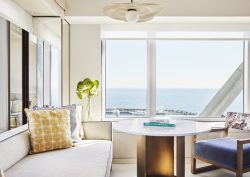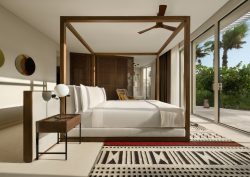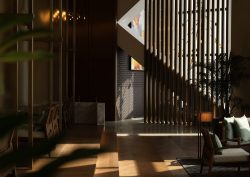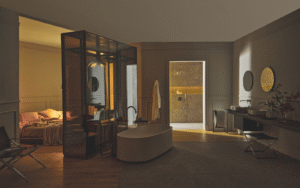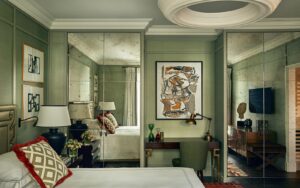In a week culminating in International Women’s Day, writer Pauline Brettell sat down with Michaela Reysenn, founder of the female-led interior design studio, KAI Interiors, to find out a little more about what goes into designing and creating unique hospitality spaces…
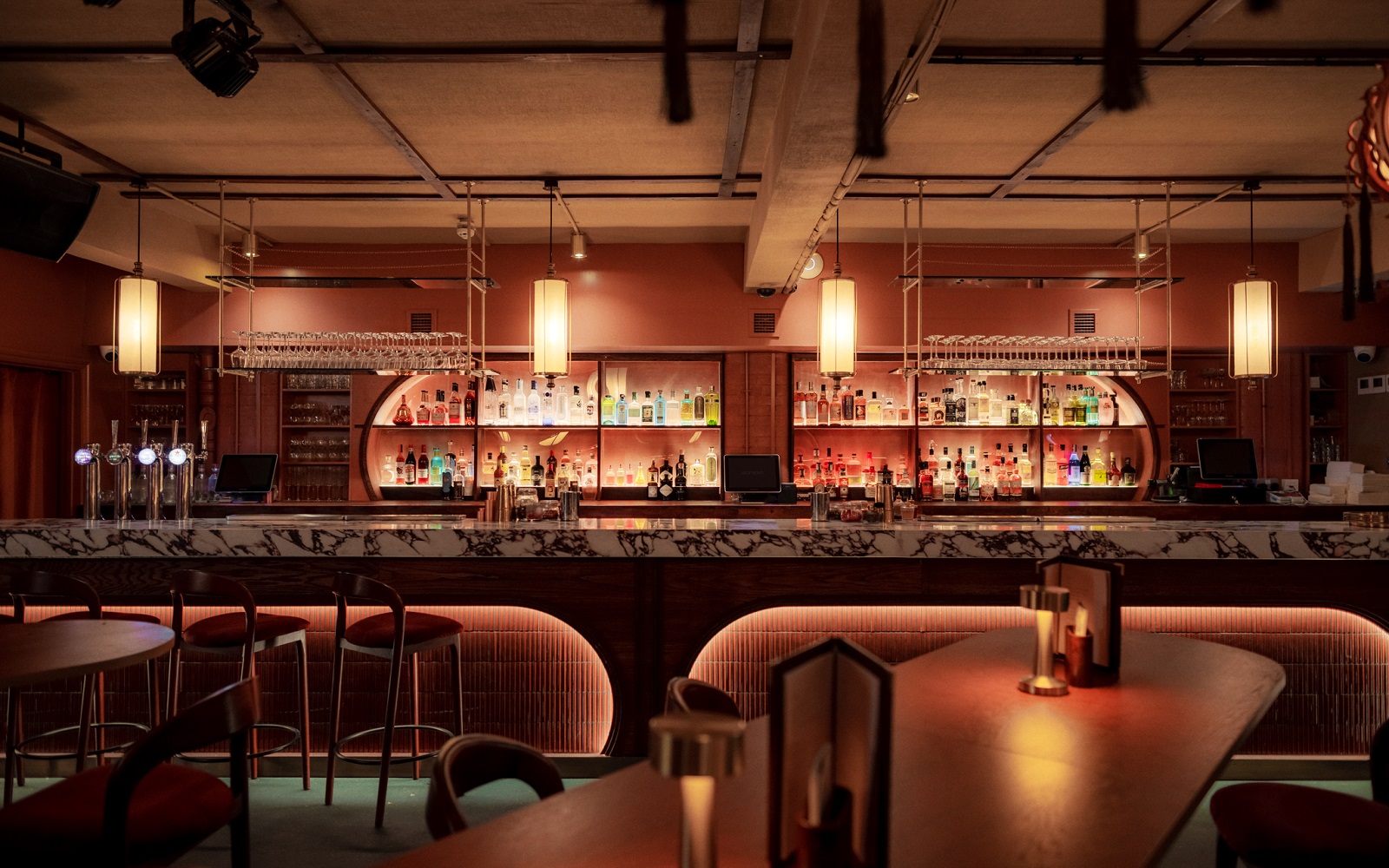
KAI Interiors is an award-winning interior design studio based in East London. Michaela Reysenn founded the studio over a decade ago and during this time, has worked with some of the industry’s leading hospitality businesses. She has, at the same time, built a strong team of designers who are conceptually driven and constantly exploring new materials and design avenues.
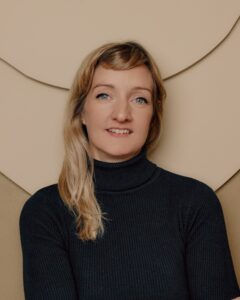
Image credit: KAI Interiors
Pauline Brettell: Let’s start at the beginning – KAI Interiors, can you explain the name and what inspired you to start your own design studio?
Michaela Reysenn: Starting my own design studio felt like a natural step to take when I completed my studies, I have always been in management roles and building teams, so I felt confident to set up on my own. My passion and drive has allowed me to grow the business to this moment and I am so proud that I have had so many opportunities to work with amazing clients who share my passion for creating F&B spaces that inspire their guests.
KAI was quite simply a nickname from Michaela and that stayed with me, however as the years have progressed it has been really interesting to hear the many meanings behind the word ‘KAI’ in different languages. As a huge foodie I was pleased to hear that KAI means food in Maori. It also has meanings such as ‘happy’, ‘strong’, ‘ocean’ and ‘restoration’… I connect with all of these, so it felt like the ideal fit.
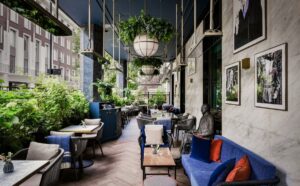
Image credit: KAI Interiors / Hyatt Regency
PB: You have a background in F&B – has this impacted on your design approach?
MR: I always knew I would work within the creative sector and had a real love for interior design from a very young age, repositioning furniture daily and changing the wall colours in my bedroom. I grew up with a father as a Chef and Hotelier and a Mother who owned her own bakery, so hospitality was in my blood from the offset. I worked my way through the industry until I finally invested into a restaurant in London.
I was Operations Manager for a small group of bars and loved every minute. I really enjoyed building up teams that were passionate about customer service and giving them training to create their own cocktails which then became part of the menu. With all of these years of knowledge alongside my studies I knew that a career within hospitality interiors made total sense, it was the perfect combination for me which enabled me to use decades of knowledge and experience.
So many of our clients really appreciate value the input we can give, that takes into account the operational aspect of the business alongside the aesthetic. We are practical with our suggestions while striving for timeless design, which will excite guests time and time again.

Image credit: KAI Interiors
As a company we are really supportive of small, independent businesses that are opening a new venue for the first time. We can help through every step of the process and continue to support them by promoting them on our social platforms for years after the project has finished.
When we work within the hospitality sector we know that time is not on our side, we need to get the site open as fast as possible reducing any loss of earnings. We pride ourselves in being super-efficient and organised, pre-empting the clients questions. As we start to develop floor plans it typically opens up a lot more questions for our clients that they have not yet considered, so we bring our operational experience to the foreground at this point to ensure they are thinking about the flow and long term implications.
PB: Looking at some of your past projects, there is a strong emphasis on surface texture and lighting – can you expand on these elements in your design story.
MR: Each and every project is different and we really focus on the clients business model, so we can then allow that to blossom and dictate our design approach. We love to explore sustainable materials and constantly push our suppliers to try new things. It is important when we design a space that it is immersive where relevant – we want each and every sense to be engaged, whether that be through scent, sound or touch. Each element is considered, to add more depth to the interior and the customer journey. Surface texture and lighting are really key when creating an immersive space.
When it comes to lighting we like to do this in house as much as possible – we design our own bespoke lights for some clients, to make them unique to the project and emphasise the design story at each opportunity. Our hospitality clients want their space to work as hard as possible for them, which makes sense from a revenue perspective. They often need it to evolve from a daytime venue to late night bar or restaurant once 5pm hits. One of the key ways to do this is with considered lighting and texture. Having a carefully programmed lighting system will make the colours, textures and atmosphere within a space totally change and this is one of the ways we design spaces and maximise clients profit opportunities.
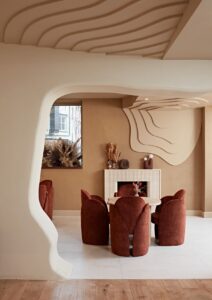
Image credit: KAI Interiors
PB: There is a lot of conversation around the ‘blurring of boundaries’ between domestic and hospitality design right now – has this impacted on any of your designs?
MR: It is really interesting to see how the industry is evolving, with the younger generations drinking less we are seeing non alcoholic cocktail bars coming into play and more health and wellbeing focused businesses which are merging an F&B offer with health facilities. Post pandemic it is clear that people are prioritising their health and this is certainly impacting the hospitality industry.
At the same time we are seeing a real shift towards hotels becoming something for everyone, whether that be as a residence for guests who stay for 12 months periods, guests who need to work, guests who need to relax. We have also seen a shift toward more structured holiday offers with a focus on ‘sleep tourism’.
The emergence of AI use within hospitality is allowing hotels to tailor their services to guests more so they get a very unique and personalised stay, whether that is explored through their preference of bedding, scent and temperature within their room, or their drinks of choice within the ‘maxi-bar’. We are excited to see the evolution of the industry – despite the cost of living crisis and the array of other challenges we have all been facing over the last few years, we strongly believe that we will continue to see people enjoying hospitality spaces.It might be in a slightly different way, but we need social connection, it is essential to our wellbeing and this is at the heart of what we do at KAI Interiors.
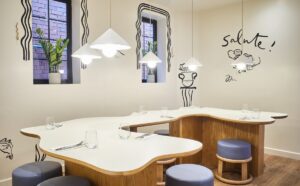
Image credit: KAI Interiors / John McDavid
PB: Do you have a standout hotel design that in your opinion ticks all the boxes and is a design inspiration?
MR: I love so many different hotel designs for different reasons and I can’t pick just one. I love the ocean, so anywhere on the coast is always a winner for me. I love Amouage in Taghazout, Morocco –the design is clean and simple but full of traditional Moroccan tiles, rugs and tadelakt walls yet they have little modern twists in the finishes with pops of neon and more current designs. The infinity pool overlooks the sea which is a big tick for me!
Babbington House for the traditional country house getaway and I adore the all you can eat afternoon tea – they have the best bakewell tart I have ever tasted. If anyone can better it. let me know!
Morocco has a special place in my heart and whilst designing Dar Jasmine hotel in Northern Morocco I was lucky enough to explore Marrakech, Fez, Casablanca and Chefchaouen. A couple of stand out places for me were Dar Rhizlane which has the most beautiful architecture and pool area, and El Fenn for its strong use of colour and well curated artwork from local artists.
For something closer to home, I always enjoy the Mandrake Hotel in London, as it has so many different nooks and styles, the open air riad element is a real treat for a central London location.

Image credit: KAI Interiors / John McDavid
PB: What has been your biggest design challenge?
MR: Every single project comes with its own challenges, whether they be small or large. I think overall, our challenges are often linked to budget and time constraints. As a team we will push really hard to exceed the clients expectations when it comes to timeline – we really care about our clients and want to get their business up and running as soon as we can.
The team are strong at problem solving and we do this day to day, whether it is a small issue or large, we find solutions fast. Our main focus when designing a space, is to think like a chess player, always stay five steps ahead. We consider all potential issues and do everything we can to prevent them happening. More recently our big challenges are getting well priced furniture which will withstand the test of time, specifying sustainable materials which don’t break the bank.
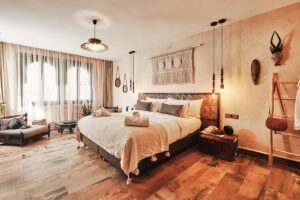
Image credit: KAI Interiors
PB: Your favourite project to date?
MR: Dar Jasmine, Morocco. I love each and every project but when it comes to hotel design I am very proud of the design at Dar Jasmine in Chefchaouen Morocco. It was years of work and each and every design element was designed by ourselves and produced by local craftspeople. It was quite an amazing experience to see it all made on site, with traditional techniques.
I also really loved bringing some of our techniques we use regularly in the UK to the craftspeople, they were so open to experimenting and this is where you find the magic. It was important for me to retain the Moroccan style in the hotel – people don’t travel all the way to Morocco so they can stay in a hotel that looks like one they might find in their homeland – they want authenticity and to experience the style and culture that Morocco has to offer. We hand-selected marble and produced a multi-coloured parquet marble floor in the entrance lobby, paired with soft lighting and timber arc windows. The lounge chairs were upholstered with woven soft pink Berber floor coverings. The lighting was bespoke made from local materials, from timber hand carved pineapples to detailed cut and perforated brass lanterns
PB: Finally, are there any exciting new projects in the pipeline you can share with us?
MR: We are now working on the third Clays site which is super exciting – we are developing bespoke furniture for the client and we have some very playful design ideas being explored. We also have a high end coffee shop opening within the Whiteleys shopping centre, a Vietnamese street food restaurant, Fego Bakehouse in Ascot and some others we can’t talk about just yet!
Main image credit: KAI Interiors





